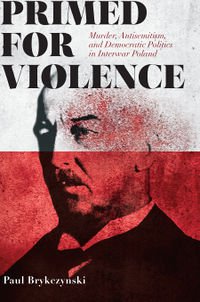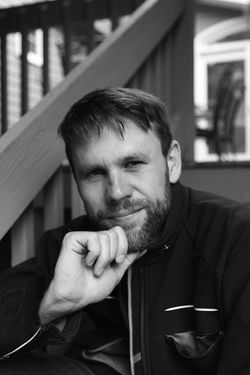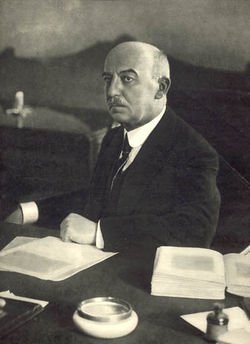Primed for Violence in Interwar Poland: Interview with Paul Brykczynski
After the Great War, instead of being divided between the Austro-Hungary, Germany and Russia, Poland emerged from the Treaty of Versailles as an independent nation. Despite being granted independence, Poland was immediately drawn into a series of border wars with the Soviet Union, Lithuania and the Ukraine. As Poland fought with neighbors to define its borders, it also sought to create a truly democratic state. Paul Brykczynski's new book Primed for Violence: Murder, Antisemitism, and Democratic Politics in Interwar Poland published by the University of Wisconsin Press explores the tragic efforts of the Polish people to create a new democratic state after electing their first President, Gabriel Narutowicz.
Paul Brykczynski received his Ph.D. from the University of Michigan in European History and Primed for Violence is currently being translated into Polish.
Here is our interview Dr. Brykczynski.
How did you become interested in writing about interbellum Poland? The interbellum period was a fascinating age of experiments and extremes. The radical right and radical left had not yet discredited themselves with the crimes of Nazism and Stalinism, and the political horizon appeared to be wide open for all kinds of potential solutions to political, social, and economic problems. Advocates of democracy, authoritarianism, liberalism, socialism, communism, nationalism, fascism, and other ideologies all vied for power in the multitude of small states created by the collapse empires following World War I. In Poland this debate played out very differently than in neighboring countries, especially Germany and the USSR, and I wanted to understand why this was the case.
In 1918, the Second Polish Republic was created. What did the new Poland look like in 1918? Were Poles optimistic about their future?
The interbellum period was a fascinating age of experiments and extremes. The radical right and radical left had not yet discredited themselves with the crimes of Nazism and Stalinism, and the political horizon appeared to be wide open for all kinds of potential solutions to political, social, and economic problems. Advocates of democracy, authoritarianism, liberalism, socialism, communism, nationalism, fascism, and other ideologies all vied for power in the multitude of small states created by the collapse of old empires. In Poland, nationalism and anti-Semitism played an ever bigger role in politics. I wanted to understand why this was the case, and what this can tell us about the relationship between politics, ideology, and violence more generally.
What kind of challenges did Poland face after it was recreated? What was the political environment like?
Interwar Poland faced enormous challenges, most of which were shared by other Eastern European states. First, was the challenge of introducing democracy to a people with virtually no experience of political liberty. Second, was the problem of dealing with powerful and hostile neighbors, Germany and the Soviet Union, who would ultimately join forces to destroy the Polish state 1939. Third was the question of economic reform--like most countries in Eastern Europe, Poland was a primarily agricultural state desperately trying to industrialize and modernize its economy. And finally there was the so-called “nationalities question.” About 30% of the country’s population was comprised of ethnic minorities, mostly Ukrainians, Jews, Germans, and Belarusians, many of whom did not wish to be the citizens of a Polish state.
Who was Gabriel Narutowicz? How did he become prominent in interbellum Poland?
Narutowicz was an extremely successful Swiss-educated engineer who had left Poland as a young man. Yet he decided to give up his comfortable life in Zurich in order to help rebuild the country of his birth. His vision of Poland was an idealistic one--he envisioned a democratic, progressive, and tolerant state in which different ethnic groups would be able to coexist harmoniously under the rule of law. His rise to prominence boils down primarily to his international experience and personal charm, a combination which made him one of the country’s most successful diplomats.
How strong was anti-semitism in Poland?
It was much stronger than many people realize. The most powerful political movement of the day, known as the National Democrats, was rabidly and pathologically antisemitic. But at the same time, in 1918 opposition to antisemitism was also stronger than many people, especially outside of Poland, may think. What I tried to show in the book was that antisemitism, and ethnic hatred more broadly, was the subject of a profound debate. Fundamentally it was a debate between the inclusive and closed visions of the national community--a debate which seems to have raised its head again today, not only in many European countries but also in the United States. Antisemitism isn’t as central to this debate as it used to be, but if we substitute the word “Jews” for “migrants,” the forces at play are not entirely dissimilar.
Why was Narutowicz nominated for the presidency? He seems to be an unlikely candidate? There is a myth, still current today, that it was the national minorities, and specifically the Jewish parties, which played the decisive role in bringing Narutowicz to power. Indeed, this is why he was murdered. In reality, however, his election was the result of a series of accidents. One of the things I realized while researching this book is that seemingly random events can play a crucial role in setting off deeper, long-term processes. For example, if a better-known left wing candidate had been elected to the presidency, the story of the election being a “Jewish conspiracy” would have been more difficult for the nationalists difficult to sell to the public. And this may have had important long-term implications for the development of Polish-Jewish relations in the interwar period and beyond.
How did Poland react to his assassination?
The initial reaction was shock and outrage. Even those antisemitic politicians who had stoked the fires of hatred and called the president a “Jewish stooge” initially condemned his murder. But even though no one publicly condoned the assassination, many nationalists portrayed it as a natural reaction to the Jews’ participation in the election. And the murderer was quickly turned into a sort of tragic hero, whose intentions were pure and noble even if his actual actions were misguided.
What surprised you the most when you were researching this project?
I think most surprising was the power and reach of antisemitism, on the one hand, and the existence of such forceful opposition to it, on the other. Interwar European society, and in this case Poland is an exemplar rather than an exception, was extremely polarized. In the end, the nationalists and antisemites won the debate in most countries, but it in the early 1920s the struggle was perhaps at its peak and all options were still on the table.
How would you recommend using your book for a history class?
Aside from helping understand the rise of nationalism and antisemitism in interwar Europe, the book can be used to get students to think about how the interplay between contingent events and structures determines historical outcomes. This is a very important question, which is often poorly theorized and understood. Finally, the book can serve as a cautionary tale about the power of hateful discourse to create violence, which in turn can further radicalize discursive structures. Today, this story seems relevant not only in the classroom but beyond it as well.


